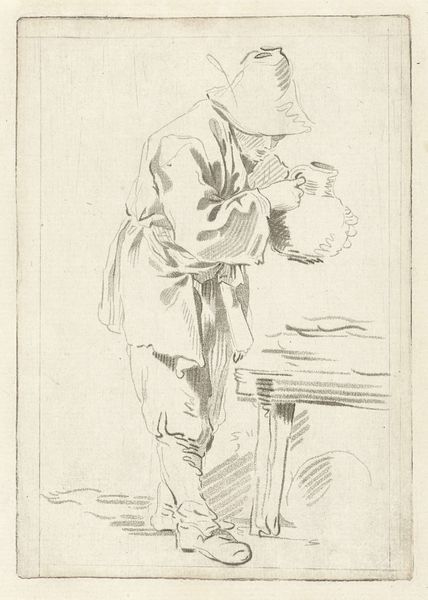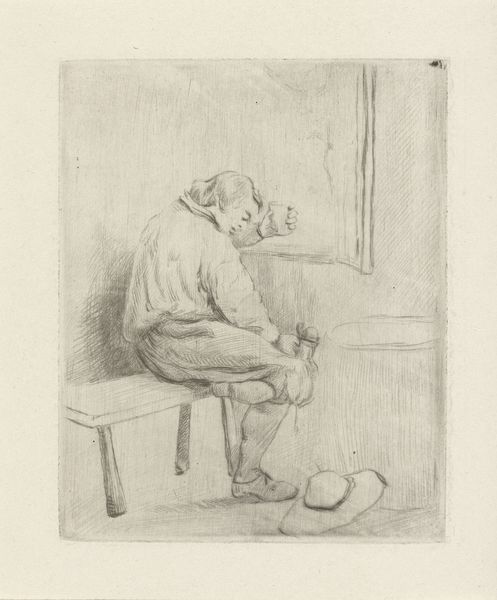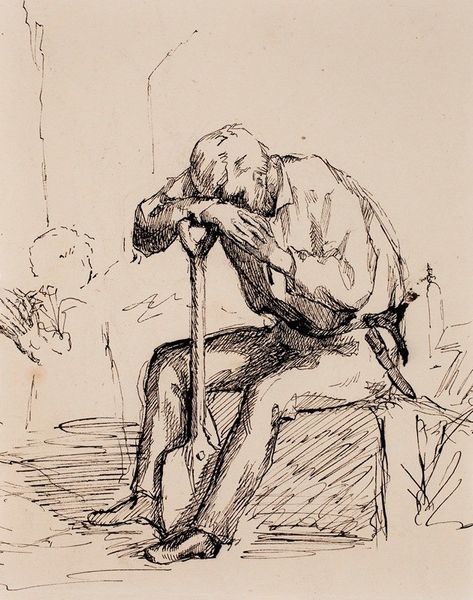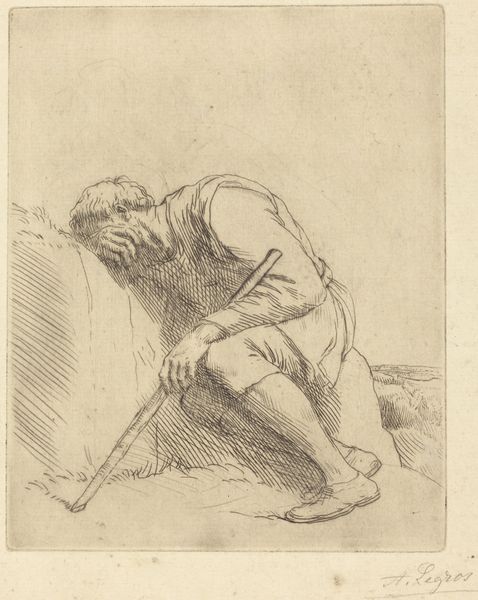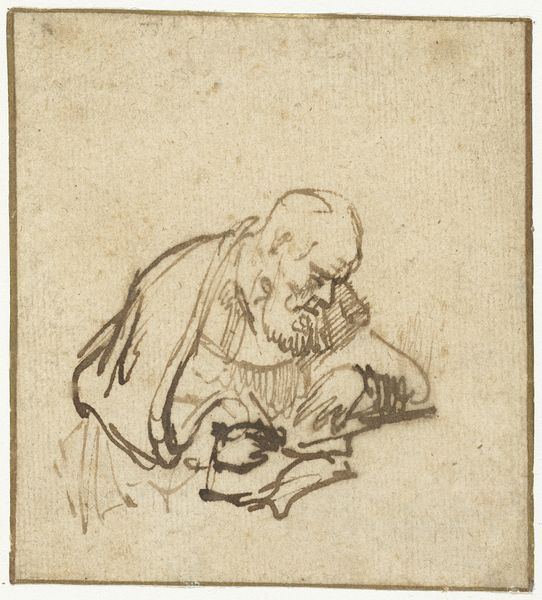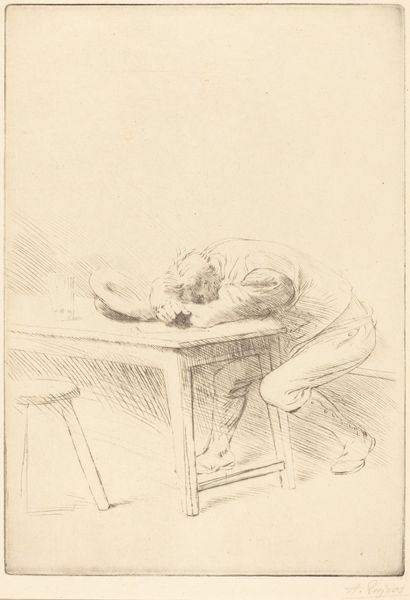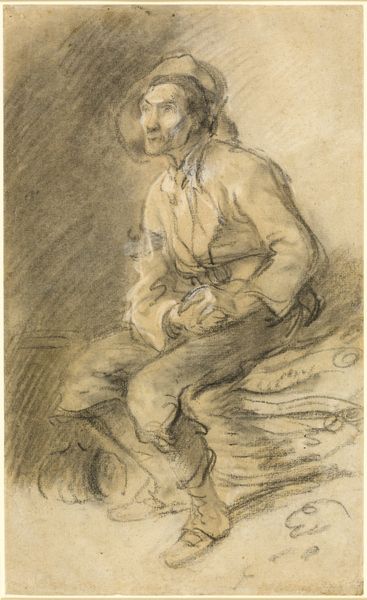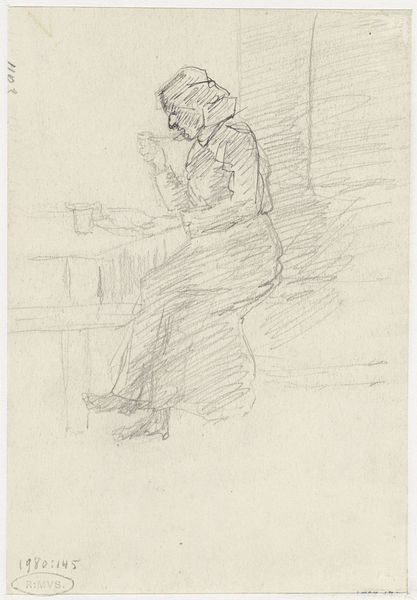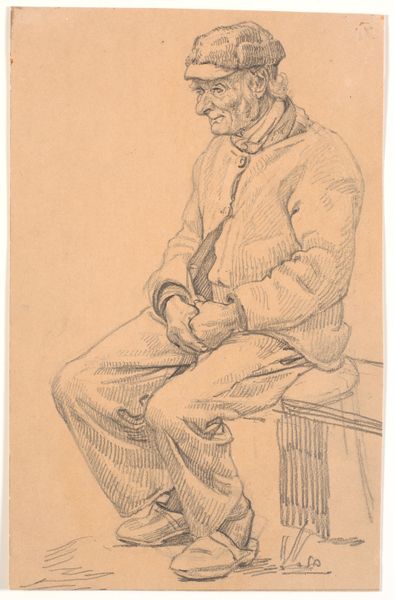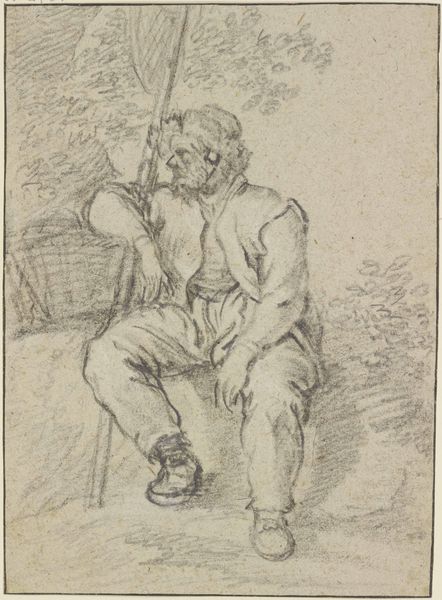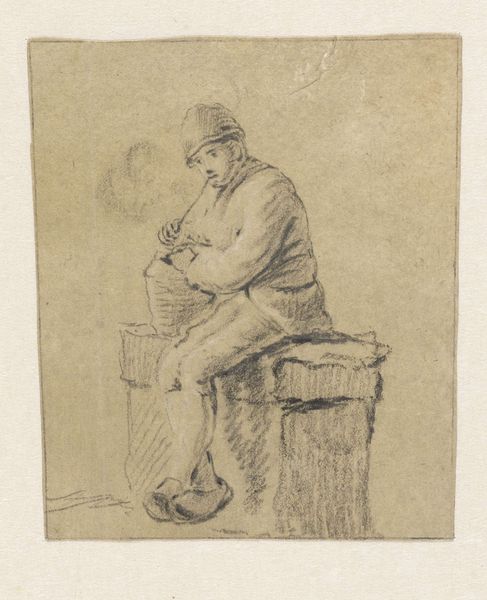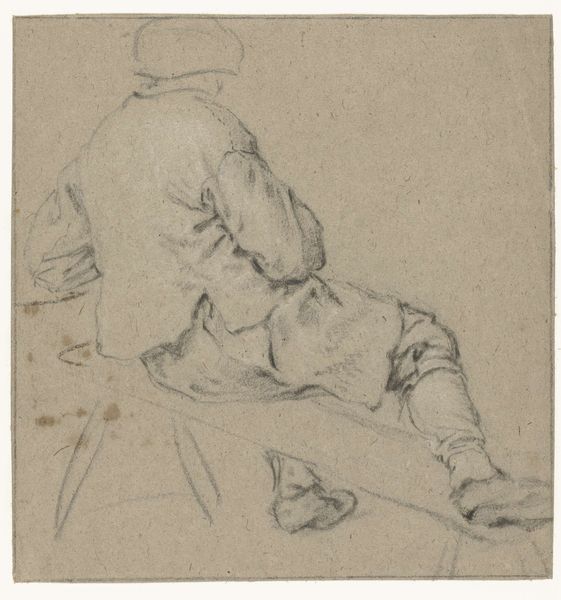
drawing, print, etching
#
portrait
#
drawing
# print
#
etching
#
landscape
#
genre-painting
#
realism
Copyright: National Gallery of Art: CC0 1.0
Curator: This is Alphonse Legros' etching, "Since Then," or "Depuis ce temps-là" in its original French. Legros, known for his Realist style, often depicted scenes of rural life and portraits of the working class. Editor: Wow, what a powerful image. It’s almost stark in its simplicity, isn't it? There's so much quiet sorrow hanging in the air. I can almost feel the weight of his weariness. Curator: Absolutely. Legros created this at a time of great social upheaval, as the industrial revolution dramatically reshaped European society, uprooting many from their traditional ways of life. We should understand it in light of the changing societal structures. Editor: I see it. He’s not just an old man sitting; he’s a symbol of that disruption. Did Legros do a lot of work dealing with alienation? I am curious to know if other pieces reflected a similar vibe. Curator: Indeed, many of Legros's works address the themes of poverty, marginalization, and the dignity of labor. He often returned to scenes of peasants, rural landscapes, and religious subjects to explore the complexities of social realities. Editor: You can sense it here too, especially in how he portrays the figure's posture—bent, head down, almost defeated. The use of line and shadow adds a haunting layer. There's a bucket hat placed to the side, probably for donations? That seems crucial. Curator: It’s a reminder of the economic disparities present during this period and highlights the individual’s vulnerability to larger systemic forces. Consider also how his clothing seems both worn and oddly formal, suggesting perhaps a former dignity eroded by circumstance. Editor: That makes perfect sense. To think that this image was etched… such fine detail to get such emotion across. I almost missed the water jug too at first sight. It's kind of an eerie depiction of aging. Curator: His careful consideration of light and shadow serves to emphasize the figure's humanity. He’s a subject worthy of contemplation and respect. And also serves to point the structural problems that leads him to the spot. Editor: You're so right, looking at it that way completely changes the perspective for me, thank you for your time. Curator: It was my pleasure. Thank you too for bringing your thoughtful insights to our conversation.
Comments
No comments
Be the first to comment and join the conversation on the ultimate creative platform.
